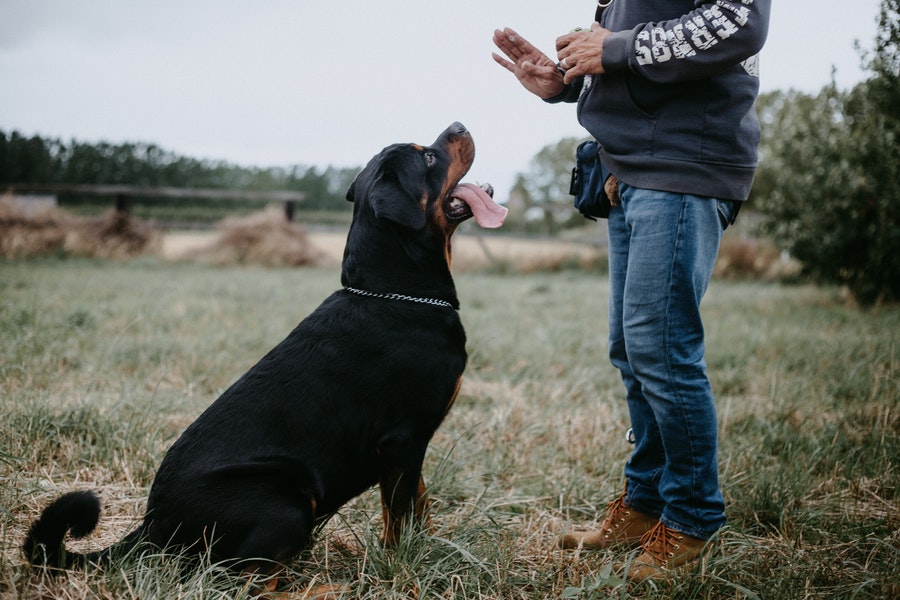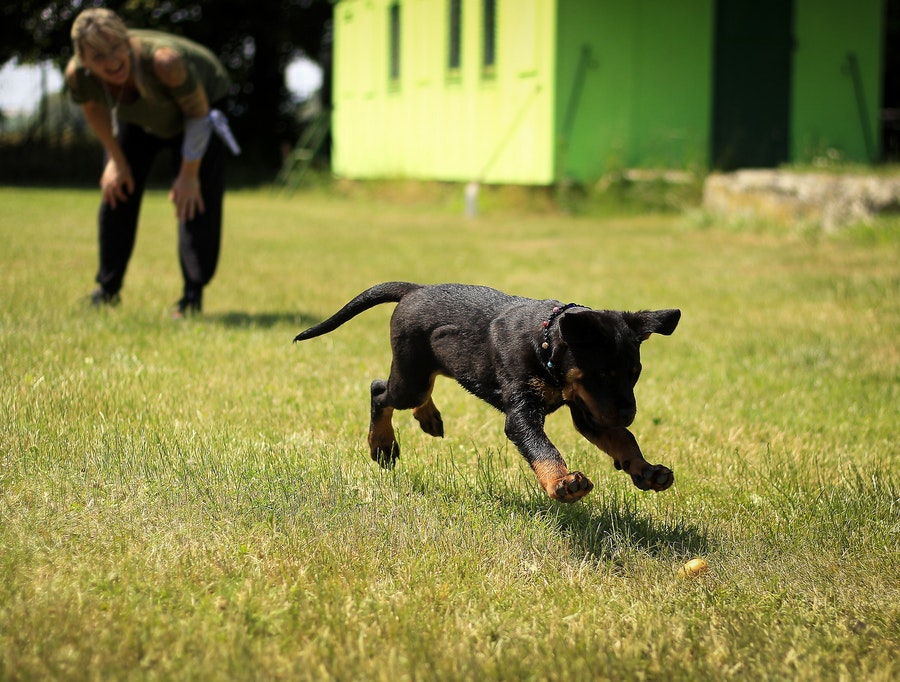After thousands of years of practice, you might think that training a dog would be a natural, almost intuitive process for us humans. But, all too often, we make mistakes that lead to persistent “disobedience” and strained relationships with our dogs. Due to the dog’s resilient nature, minor mistakes rarely result in disaster. But major mistakes can cost owners (and dogs) years of frustration. So here are the 10 most often mistakes that dog owners commit.
Note that these relate to the training technique only, and not to other important areas such as socialization, enrichment or the chosen exercise.

1 You don’t take enough time to educate him
Most owners will stop showing their dog the right way very quickly, because they think once they have learned it is a given. The dog will end up not responding to his master. This degradation is simply due to a lack of practice. If you only play golf once a year, will you improve?
Keep your dog’s established behaviors sharp by working them out regularly. The larger your pet’s repertoire of behaviors, the easier it will be for them to understand you and be motivated.

2.You repeat the commands
I see it often, especially among newbie owners with picky dogs. The owner has taught a behavior such as “to sit” but, due to distractions, poor technique or confusion on the part of the dog, the animal does not respond. The owner asks repeatedly until after the sixth or seventh attempt the dog is half-seated. This then becomes THE learned behavior, difficult to break.
This often occurs with behaviors that have not been fully verified or with behavior that the dog does not particularly like. Once you are sure a dog is experiencing a behavior, ask only once! It should be understood that it often takes several seconds for your dog to understand you.
3 Your training sessions are too long or too short
Teaching a dog new behaviors is an evolutionary process. The key is to know that it will usually take many sessions to perfect a new behavior.
The time spent in a training session should reflect a positive result. As soon as you reach a clear level of success, reward, then stop exercising. Remember that ten one-minute sessions a day is better than one ten-minute session each time. Short, repeated and successful sessions will make your success.
4 Your dog’s behaviors are not generalized
If you teach Rex to “sit” in the quiet of your living room, this is the only place where he can sit reliably. This is a mistake many homeowners make. Not generalizing the new behavior in different areas with varying conditions and levels of distraction will guarantee your frustration.
To generalize a behavior, learn it first at home without distraction. Then gradually increase the distractions: turn on the TV or have another person sit nearby. Once it’s perfect, go out into the backyard. Then add another person or dog. Gradually move to more stimulating environments. This generalization is particularly vital during recall. To learn more about the recall tips, go here: Recall training.
5 You rely too much on treats
Treats are a great way to initiate or reinforce behavior. But, it is true that most owners will not know how to do without it if it is not explained to them. Plus, your dog can be rewarded with some play time with you or even some freedom. Finding all the motivations of your dog will facilitate learning. No matter what reward is used, you will only be able to part with it very gradually. The treat can, for example, be given once in two, then once in three, etc. But, this will only be possible if your dog knows the demand and has generalized it.

6 You are too emotional
Excessive emotion can hamper your dog’s ability to learn. A relaxed, caring and self-confident energy will allow your dog to follow you with more confidence. If you’re in low spirits, it’s best to avoid teaching your dog a lesson.
7 You are reactive, not proactive
Training a dog takes time. As a result, many dog owners have yet to master the timing and knowledge to train as effectively as they would like. Like someone who is playing chess for the first time, they react to their opponent’s moves instead of planning their own.
When you simply react to bad behavior of your dog, you lose the opportunity to teach. You must therefore anticipate your reactions in advance, becoming more proactive in the process.
8 You are inconsistent
The inconsistency of the masters is almost the evil of the century. Many owners will change their word or gesture for the same request. They will also allow the dog to choose when he can get on the couch and will argue with him if he rides with his dirty paws. The dog cannot therefore learn as it should under such circumstances.
If you tell your dog to “sit”, you shouldn’t say “sit down” the next hour or so. Think of it as sign language. Each / or signal means a specific thing. To communicate well, you must therefore not be mistaken.
9 You lack knowledge
Lack of knowledge is often detrimental for the dog. Indeed, this leads to preconceived ideas that are sometimes dangerous. And they are often the result of misunderstanding and conflict between humans and dogs. Think about your dog’s adaptive behaviors. This means he has them to suit what you are giving him.
10 You don’t always adapt
Each dog has a different personality and history. The dog’s personality must be understood for his education to be successful. Adapting to your dog is an obligation.
A puppy will not be able to give you as much as an adult dog. And even if he does, his age will have to be taken into consideration. He will probably need more breaks, for example. If he easily disconnects from you, that’s okay.
Practice, succeed and have fun with your dog.




